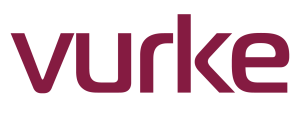Enhancing Your Workforce: A Comprehensive Guide to Staff Augmentation
Staff augmentation has become a transformative strategy in workforce management. It empowers businesses to optimize their resources while addressing ever-evolving industry demands. This guide delves into the essential aspects of staff augmentation, its undeniable benefits, associated challenges, and actionable best practices to help you implement this model seamlessly.
What Is Staff Augmentation?
Staff augmentation is a strategic outsourcing model that allows businesses to add skilled professionals to their existing workforce on a temporary or project-based basis. Unlike traditional hiring, this approach focuses on flexibility and scalability.
Key Features of Staff Augmentation
- Scalable Workforce: Enables businesses to adjust team size based on project requirements.
- Specialized Talent: Provides access to professionals with niche skills unavailable in the in-house team.
- Quick Deployment: Reduces the time required for recruitment and onboarding
By leveraging staff augmentation, companies can efficiently address skill gaps, manage high workloads, and meet project deadlines without the long-term commitment of permanent hiring.
Benefits of Staff Augmentation
1. Access to Global Talent
With staff augmentation, businesses can tap into a global pool of professionals. Skilled experts in IT, healthcare, and engineering are readily available, ensuring that companies find the perfect fit for their needs without geographical limitations.
- Example: A software development firm can augment its team with developers proficient in emerging technologies such as blockchain or AI.
2. Cost-Effective Resource Management
Compared to permanent hiring, staff augmentation significantly reduces costs. Expenses associated with recruitment, benefits, and training are minimized.
- Notable Advantage: In industries like healthcare and IT, staff augmentation cuts overheads while maintaining operational efficiency.
3. Enhanced Project Efficiency
By integrating external talent, businesses can accelerate project timelines without compromising quality. This is particularly beneficial for short-term or specialized tasks requiring immediate expertise.
4. Flexibility in Workforce Management
Staff augmentation offers unparalleled flexibility. Businesses can scale their teams up or down based on project demands, reducing the risks of underutilized resources.
Challenges of Staff Augmentation
While staff augmentation offers significant advantages, it’s not without its challenges.
- Integration with In-House Teams
Ensuring seamless collaboration between augmented staff and existing teams is critical. Differences in work culture, communication styles, and workflows can lead to inefficiencies.
- Dependency Risks
Over-reliance on external professionals can pose risks to knowledge retention and long-term team stability.
- Mitigation Tip: Implement knowledge transfer protocols to ensure critical insights are documented and shared.
- Legal and Compliance Issues
Working with global talent often requires navigating complex labor laws, tax regulations, and compliance standards. Without proper guidance, businesses may face legal complications.
Best Practices for Implementing Staff Augmentation
To reap the full benefits of staff augmentation, businesses must adopt strategic approaches.
1. Partner with Reliable Providers
Collaborate with experienced staff augmentation providers like Vurke to ensure access to a vetted talent pool, streamlined onboarding processes, and compliance expertise.
2. Prioritize Effective Communication
Foster open communication between in-house and augmented teams. Use collaboration tools like Slack or Microsoft Teams to ensure real-time updates and transparency.
3. Define Clear Roles and Expectations
Before onboarding augmented staff, outline project objectives, deliverables, and performance metrics. Clear guidelines reduce misunderstandings and ensure accountability.
4. Regularly Evaluate Performance
Schedule periodic evaluations to assess the effectiveness of augmented staff. Incorporate feedback mechanisms to identify improvement areas and ensure alignment with business goals.
Staff Augmentation Across Key Industries
Staff augmentation is not confined to healthcare and IT. Its adaptability and efficiency make it an asset across multiple industries. Here’s how various sectors leverage staff augmentation to address unique challenges and achieve operational excellence:
Healthcare
Temporary healthcare professionals can fill staffing gaps during high-demand periods, such as flu seasons or pandemics. This ensures continuity of care and reduces the burden on full-time staff.
- Use Case: Hospitals can augment their nursing staff to handle patient surges during outbreaks or emergencies.
IT and Technology
With rapid technological advancements, staff augmentation allows IT companies to deploy experts proficient in cutting-edge fields like cloud computing, cybersecurity, software development, and artificial intelligence.
- Use Case: A tech firm may hire data scientists temporarily to handle a specific AI-driven project.
Oil and Gas
In an industry where project scopes and durations vary, staff augmentation is indispensable. Companies can bring in geologists, engineers, and safety professionals for exploration, drilling, and compliance tasks.
- Use Case: During a new offshore drilling initiative, staff augmentation ensures access to skilled professionals without long-term contracts.
Automation and Manufacturing
Staff augmentation supports automation and manufacturing sectors by providing skilled technicians, engineers, and project managers for system upgrades, lean process implementations, and scaling production.
- Use Case: Factories transitioning to smart manufacturing may temporarily augment their teams with robotics engineers and IoT specialists.
Pharmaceuticals
The pharmaceutical sector, driven by innovation and stringent regulations, benefits significantly from staff augmentation. Companies can hire researchers, quality control specialists, and compliance experts to support drug development and regulatory filings.
- Use Case: During a vaccine rollout, pharmaceutical firms can increase capacity by augmenting their quality assurance and distribution teams.
Retail and E-Commerce
Retailers, especially during peak shopping seasons, rely on staff augmentation to manage increased demand. This includes hiring temporary customer service representatives, logistics coordinators, and data analysts.
- Use Case: E-commerce platforms during Black Friday sales may scale their teams with additional customer support agents to handle high traffic.
Banking and Finance
Banks and financial institutions use staff augmentation to secure expertise in areas like risk management, compliance, data analysis, and cybersecurity. This ensures regulatory adherence and operational efficiency.
- Use Case: A financial institution launching a fintech product may temporarily onboard blockchain developers and cybersecurity experts.
Construction and Real Estate
Seasonal demand and project-specific requirements make staff augmentation a practical solution for construction and real estate firms. Architects, surveyors, and project managers can be added to teams as needed.
- Use Case: Real estate developers launching large-scale residential projects may augment teams with civil engineers and procurement specialists.
Education and E-Learning
The shift towards online learning has created new staffing needs. Educational institutions and e-learning platforms leverage staff augmentation to bring in instructional designers, curriculum developers, and IT professionals.
- Use Case: A university expanding its online course offerings can onboard instructional designers on a temporary basis.
Logistics and Supply Chain
The logistics sector benefits from staff augmentation during peak periods or for large-scale projects like supply chain optimizations and warehouse expansions.
- Use Case: A logistics company managing holiday season deliveries may hire additional drivers and warehouse managers temporarily.
By adapting to the specific needs of these industries, staff augmentation proves to be a versatile and impactful strategy for workforce management. Whether dealing with seasonal demand, specialized projects, or regulatory requirements, this model ensures businesses maintain agility and productivity across sectors.
Conclusion
Staff augmentation is reshaping workforce management by offering unmatched flexibility, scalability, and cost efficiency. Despite its challenges, businesses can maximize its benefits by partnering with experienced providers like Vurke, adopting effective communication strategies, and staying updated with industry trends.
Ready to implement staff augmentation for your business? Contact Vurke today and transform your workforce management strategy!
FAQs
What is the difference between staff augmentation and outsourcing?
Staff augmentation involves adding professionals to an existing team for specific projects, while outsourcing delegates entire tasks or departments to an external organization.
How does staff augmentation benefit small businesses?
Small businesses can access specialized talent without the long-term costs of permanent hiring, enabling them to scale efficiently.
What industries benefit the most from staff augmentation?
Industries like IT, healthcare, and engineering benefit greatly due to their high demand for specialized skills and project-based work.
How do I choose a staff augmentation provider?
Look for providers with a proven track record, access to a diverse talent pool, and expertise in compliance and onboarding.
What tools can enhance communication with augmented staff?
Tools like Slack, Zoom, and Asana are excellent for ensuring seamless collaboration and project management.
Can staff augmentation help with remote work challenges?
Yes, staff augmentation providers often offer remote-ready professionals skilled in virtual collaboration and project delivery.



